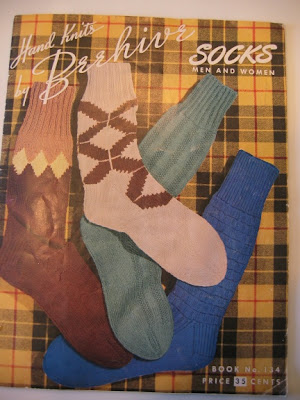
She's thirteen, as of this past Thursday. Friday, she got her braces off, which I think was almost as exciting as becoming a teenager.
She's modeling her birthday Trapper Hat (Vogue Knitting Winter 2005/2006) under the glow of the porch light, because she is also a Winter Solstice baby, which means there's not enough natural light at 7:30 am to take an outdoor photo.

Yarn: Lana Grossa Airwool and size 13 needles. It's a very soft yarn -- mostly merino wool with some acrylic. It's flat, with a layer of unplied merino sewn to a layer of acrylic. I hardly ever work with such large needles, so I lose a bit of the implied speed of big needles and yarn. I did learn to cable without a needle for this project, as the cables are 1x1, and when I knit in the round I knit continental, so I have trouble handling a cable needle. So that was nice. And she loves the hat, which is all I really cared about.
On to other knitting news
I'm finishing up some projects in order to clear as many UFOs off my list as possible.
FLAK - Done!

But I'm thinking about ripping out the neck and redoing it with fewer stitches. It feels a little wide to me. I knit 2" of ribbing and then sewed the live stitches to the inside. So maybe I'll rip back a few rows and do a regular bind off and be happy with that. Otherwise, I love this sweater. I've worn it five of the past seven days. It's State Fair worthy, assuming I can keep from spilling anything on it.
Samus - I'm about to try my third attempt at the zipper, having done some research in order to make this attempt my last.
Pomatomus

This single sock has languished on the needles mid-foot since this summer. These are a gift (no deadline) for a good friend, but I was not enjoying the 4-needle dpn method for the instep (I like 5-dpns or Magic Loop). I didn't have the right circ size to do this ML, so I bought the KnitPicks Harmony needles in 2.75mm and 2.25mm to fill in where I didn't have Classics in all the sizes. I don't use those two sizes much, and I wanted a way to easily tell them apart from my 2.5mm needles, which are my "normal" sock needles.
These quick projects, just finished

I finally understood the concept of a wrist warmer last week when it my mouse hand froze while resting on the kitchen counter. So I whipped up this single guy from leftovers of Knit Picks Panache. It's a discontinued yarn, which is too bad, because it was wonderful to knit with and it's fabulous on the skin (merino, alpaca, silk, and cashmere -- what could be wrong with that?)
Following that, I made a whole pair from Malabrigo Bulky.

More are on the horizon, as Sophia wants a pair in navy to wear at school, where some of the rooms are very cold.
New for 2008 - I've made an argyle sock for the Master Hand Knitting Program, Level 2.
Sock the first:

I always planned to make a complete pair (so I could wear them!) and since I wrote the pattern myself, I used the first sock as a learning experience for dealing with the yarn ends and the seams. A friend had told me that superwash wool could be spit spliced with extra felting time, but I didn't find that to be true, much to my disappointment. She's done it herself, so clearly there is something different, either with the yarn she used or her technique. Could be that her yarn didn't also have nylon. At any rate, I ended up with a lot of ends, and while I love the duplicate stitch method of weaving in ends, they seem very noticeable to my eye on this sock. I don't know if it's because the yarns are solid colors, or because they are knit at a tighter gauge or what. I tried Russian splicing for a while and didn't like it, but I've since acquired some thinner needles with straight tips (i.e. not Chibi bent-tip needles) and that has made some difference. I also tried splitting the plies and duplicate stitching the thinner ends and that looks better, too.
For the second sock, I'm planning to wind the entire estimated length needed for a particular color block so I can eliminate as many ends to weave in as possible. I'm curious to see what washing and blocking will do to even out my stitches, too. I get the same gauge knitting flat as I do in the round, but I sometimes see a zig-zag effect in my flat knitting that I don't see when the knitting is all in one direction.
Up next in MK Level II Land is the Fair Isle mitten. I'll probably knit three of these: a pair for my daughter, who picked out the colors, and a third for the binder. I haven't done much stranded color work in the past couple years, and I've accumulated a few new methods of knitting in the round, so I'm going to need the practice to get the hang of proper tension again.
There's more, but it's late and we're off to the World of Mickey for a long vacation with extended family.
Merry Christmas, Happy Solstice, Happy New Year, etc.

















































